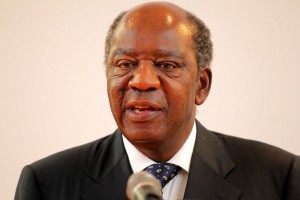THE latest report by the Moody’s Investors Service that it expects Zambia’s economic growth to remain high in 2015 and beyond, supported by the development of infrastructure projects, is heartwarming.
It is uplifting that an international credit bond rating agency of Moody’s status is able to appreciate the efforts which have gone into the development of roads, bridges and various facilities in the country.
According to the renowned rating agency, the strong economic growth and robust Government fiscal strength will continue to support Zambia’s creditworthiness.
Yes, the country’s fiscal strength remains fairly high, supported by a balance sheet carrying a moderate level of public sector debt at around 32 per cent of Gross Domestic Product (GDP).
According to Moody’s, so far, the Government’s commitment to fiscal consolidation is holding, just as expected, and will continue to do so in 2015 and beyond.
The fiscal performance throughout the first six months of 2014 was roughly in line with budgetary projections, although the original deficit target of 5.2 per cent of GDP has been adjusted.
The target has been relaxed to 5.5 per cent under the proposed 2015 National Budget which was presented to Parliament by Finance Minister Alexander Chikwanda and is currently under consideration by members of Parliament.
Generally, the Government has committed itself to curbing expenditure growth and the rise in the public debt burden, which is a step in the right direction, although the effects could be painful among the targeted citizens like public service workers.
We, therefore, admit that pressure on the fiscal position will continue mounting amid growing demand for higher salaries for public service workers who have been calling for the lifting of the two-year wage freeze slapped on them last year.
Another set of pressure will be from the on-going development projects in such sectors as education, health and infrastructure, compounded by the cost of hosting the January 20, 2015 presidential election.
In the main, however, we are optimistic that Zambia’s real economic growth will likely remain strong, rising above seven per cent next year, which will be somewhat higher than the Government’s estimation of 6.5 per cent for this year.
This is in line with the country’s continued robust growth rates which average at about 7.8 per cent per year in real terms recorded in the past 11 years.
Moody’s rightly observes that although high poverty levels, income inequality and limited economic diversification – with agriculture, forestry and fishing accounting for more than 70 per cent of employment – continue to constrain Zambia’s credit quality, ongoing Government efforts look set to address the country’s infrastructure deficiencies.
These infrastructural deficits are not unique to Zambia but are typical of sub-Saharan African countries and, therefore, have to be addressed at one time or another.
The projects to address this included the development of the connectivity, raising of power output and the improvement of productivity in the agriculture sector while developing the roads, railway lines and bridges across the country.
However, as noted by Moody’s, Zambia has continued to heavily rely on the copper export for foreign exchange which makes the local economy susceptible to any economic shocks.
The production of copper and other related economic activities contribute 25-30 per cent to the country’s GDP and generate the majority of current account receipts.
This leaves the country vulnerable to the effects of the current plummeting prices of copper mainly due to slowdown in China’s growth.
China accounts for the majority of copper exports globally.
For the future, there is need for economic diversification while ploughing more resources into areas alternative to mining.







